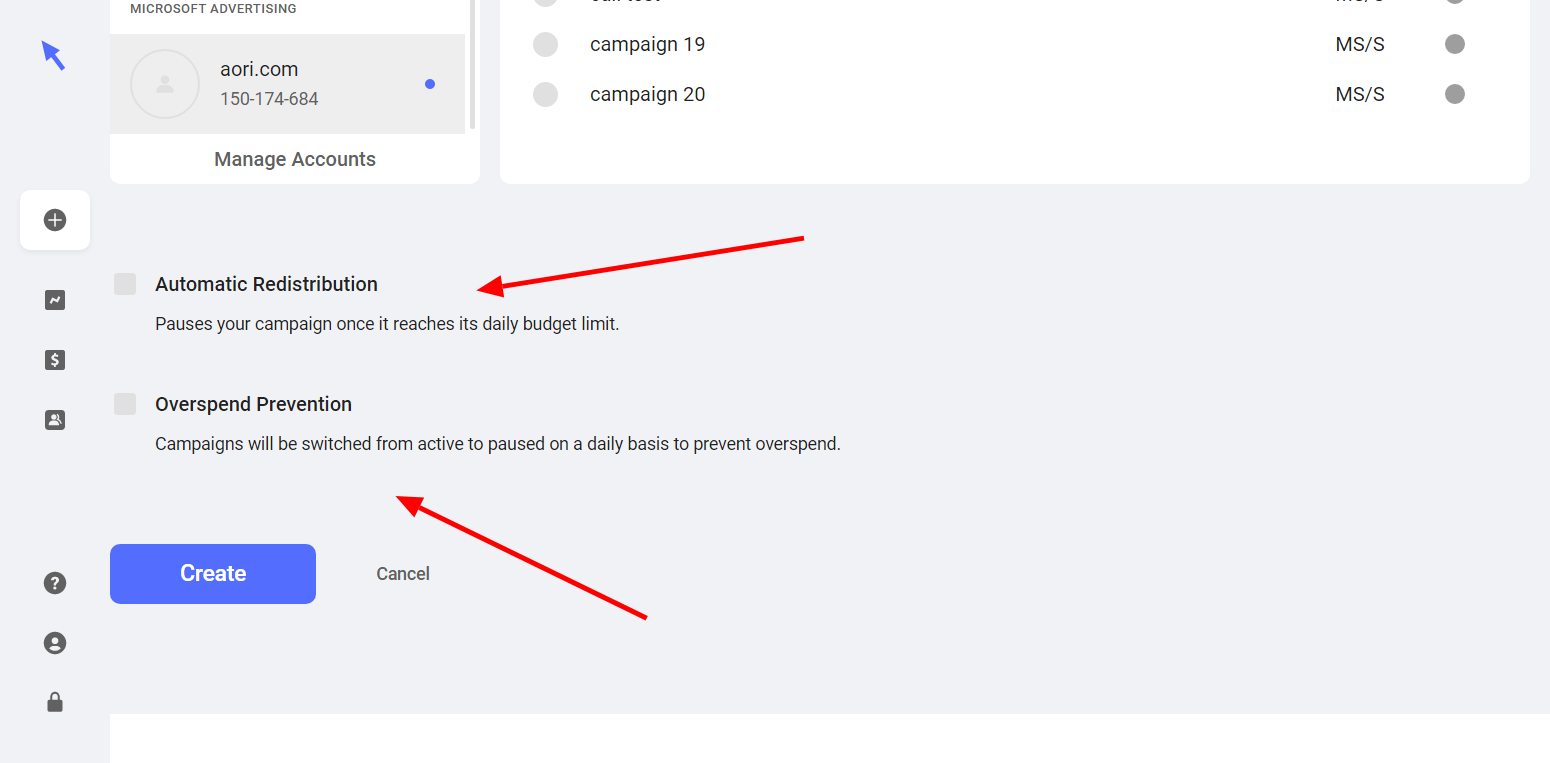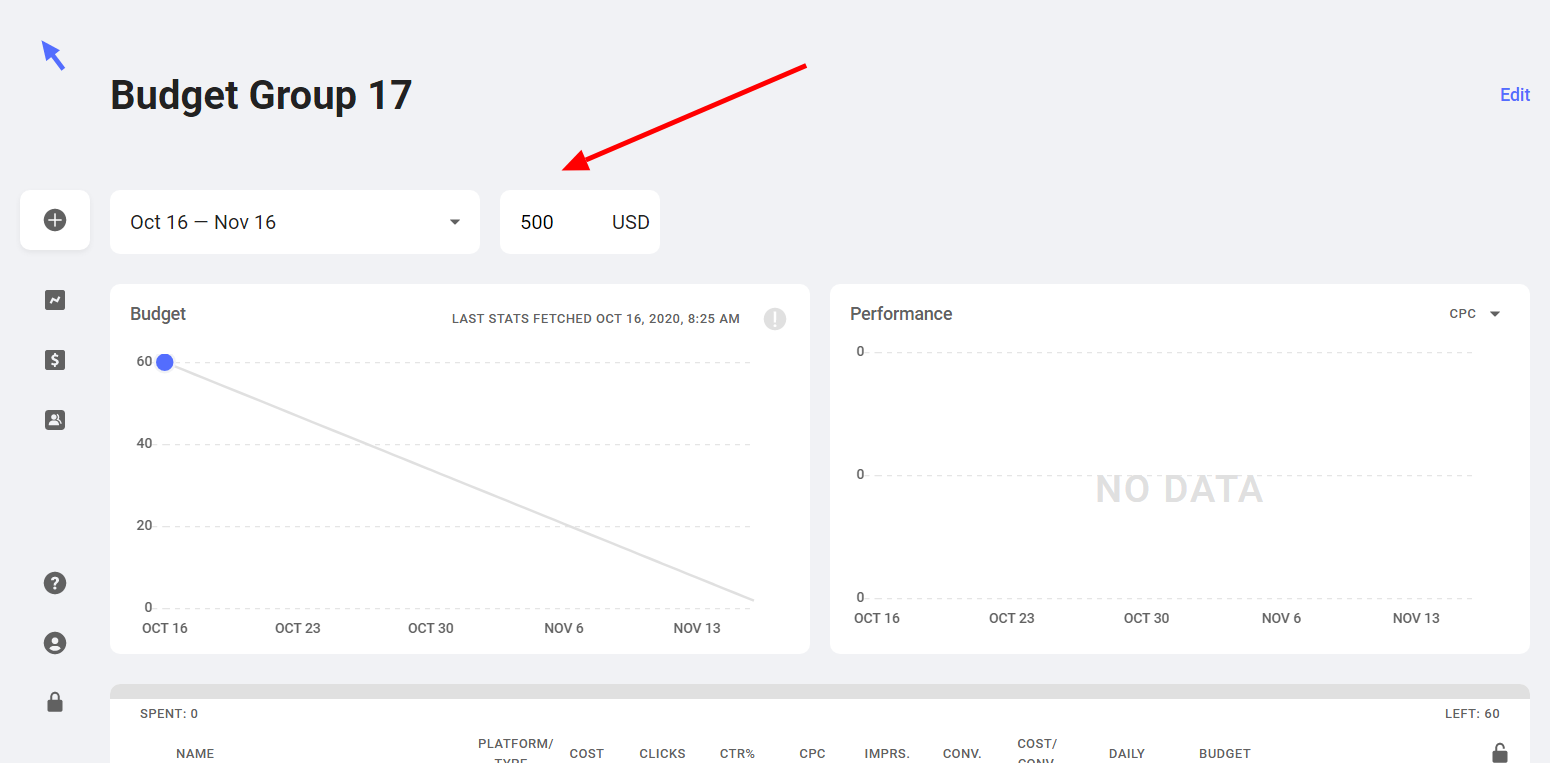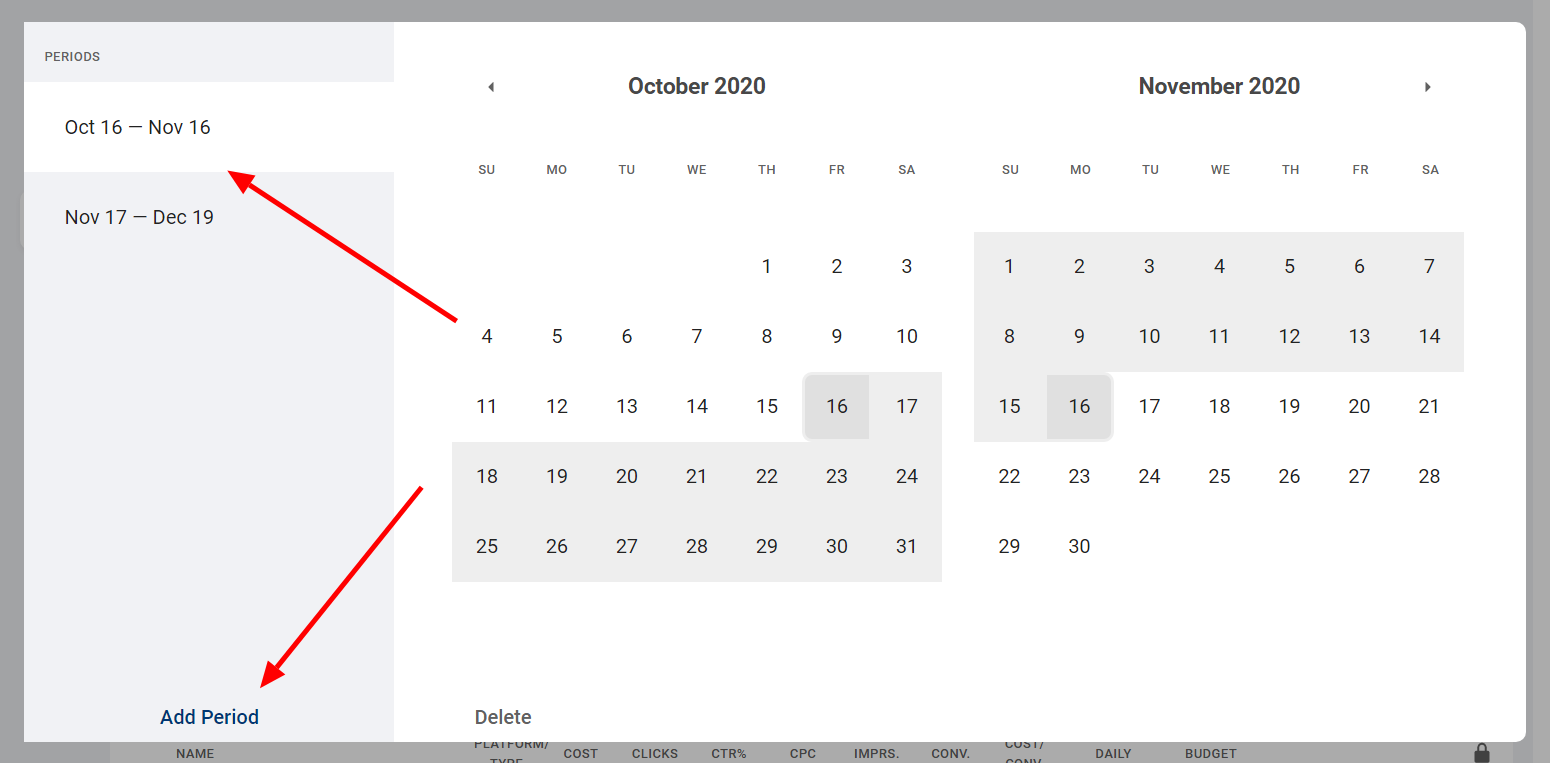A Budget Group is a cluster of campaigns that share one budget cap or target spend. A Budget Group can contain an unlimited amount of campaigns from one or more of the ad platforms supported.
The recommended grouping of the campaigns is to select campaigns that have a unique performance or spend goal. For an agency application, this could mean making one or more budget groups for each client. For an in-house or SMB application, this could mean making one or more budget groups for locations, ad platforms in case the goal is to spend a specific amount on each platform, or just one Budget Group for all campaigns.
To begin, set the basics of the Budget Group:

Next, select the campaigns to be managed in this Budget Group. On the left of the screen, there is an accounts section where you can connect and select an account. When an account is selected on the left, the campaigns within that account will be shown on the right. Make sure you have read and write permissions to the account. To select a campaign to be used in this Budget Group, click on it, and it will get a blue check mark, which indicates it is ready to be included.

Any campaign type can be included in the Budget Group. The column titled "P/T" is short for platform and type. For example a Microsoft Ads search campaign would be abbreviated as M/S (M for Microsoft and S for search). The full key is as follows: platforms (G = Google Ads, M = Microsoft Advertising, F = Facebook Ads) and type (S = search, Sh = shopping campaigns, V = video, DN = display). The status column on the left will be green for active campaigns, show a spinner for campaigns that are in the process of being imported and will show the pause icon when they are in the paused state in the ad platform.

The Budget Manager has two features that can help ensure the campaigns in the Budget Group are performing their best and not going over the scheduled budget: Automated Redistribution and Overspend Protection. As a note, it is possible to use these two strategies simultaneously.

When Automated Redistribution is on, Aori will automatically redistribute your budget to the campaigns with the lowest cost per conversion or cost per click (CPC). The user just needs to select which of those metrics should used. The initial distribution decided by the user will be the starting point, but as more data comes in for the cost of converstions or clicks, Aori will start to take away ad spend from the campaigns that are getting poor results for the selected metric and start increasing the budget for those campaigns that are getting better results for that metric. These increases/decreases will of course keep the spending on track for the Budget Group total.
When Overspend Protection is on, campaigns that spend all of the budget allocated to them on a daily level will be paused. The daily budget allocated to a campaign is the total spend allocated to the campaign divided by the amount of days in the period. This ensures a smooth spend of the budget.
Once you choose the campaigns and which budget distribution setting you'd like, you can move on to the next page by clicking "Create".
The next steps are to create the actual budget and date range you'd like your adspend to be managed for.


Continue to Distributing Budgets.
BACK TO Budget Manager